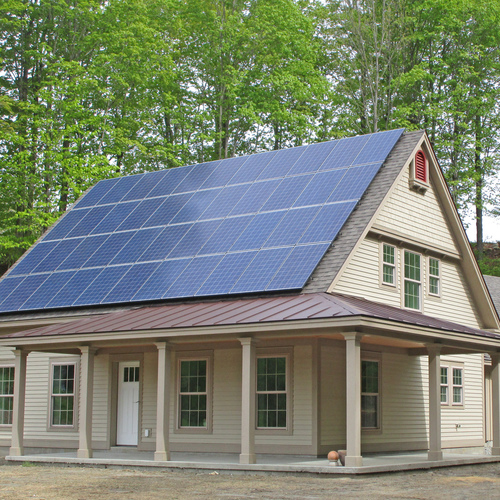
Image Credit: All images from “Energy Saving Handbook” by James W. Morrison
Rummaging through the shelves of a used book store, my son Noah came across an old paperback called Energy Saving Handbook. Written by James W. Morrison, the book was published by Harper & Row in 1979.
A brief web search failed to reveal any biographical information about the author. However, I discovered that the book was published under several different titles, and was distributed by at least four state energy offices. Morrison’s book may have been funded by the U.S. Department of Energy; some of its chapters seem to have been repurposed from government brochures.
This book came out at an interesting time for the field of residential energy efficiency (1979). It was six years after the first oil price shock (the 1973 OPEC oil embargo); three years after the Department of Energy launched the Weatherization Assistance Program; and two years after Gautam Dutt, the discoverer of the thermal bypass, had his “aha!” moment in a New Jersey attic. In 1979, the Iranian revolution caused turmoil in the international oil market — precipitating the second oil price shock of the 1970s.
Back in 1979, in spite of Gautam Dutt’s 1977 epiphany, most weatherization workers still had an incomplete understanding of how air leakage affected home energy bills. That’s not too surprising, considering the fact that blower doors were not yet commercially available. (Gadsco began marketing the first blower doors in 1980.)
In 1979, most homes were leaky
By the late 1970s, residential energy experts were beginning to pay attention to airtightness. In the “Energy Saving Handbook,” Morrison notes, “To determine the heat loss from infiltration, it is necessary to know the rate of air movement through the homes. Most houses undergo from one to three air changes per hour, depending on construction.”
Morrison’s estimates of the average natural air changes per hour in older homes…
Weekly Newsletter
Get building science and energy efficiency advice, plus special offers, in your inbox.

This article is only available to GBA Prime Members
Sign up for a free trial and get instant access to this article as well as GBA’s complete library of premium articles and construction details.
Start Free TrialAlready a member? Log in















10 Comments
As I tell my clients...
The reason it's called Building Science is because we're constantly experimenting, not that we know what we're doing.
Ah the Golden years!
My building science classes in '82 had no mention of air movement at all. Everyone was enamoured by the wonderful new vapour barriers. At the same time however, as Martin has pointed out, long-hairs from Saskatchewan to Maine were furiously experimenting and had come up with a lot of what we know today, although they couldn't quantify it.
Unfortunately, for most architects, the gap between the two didn't close until very recently. In Canada at least, a lot of credit should be given to government programmes like the NRC, and the work of people like the Building Science crew who dragged architectural schools into taking this stuff seriously.
Morrison
Martin,
My research show's the author's book was published for each and every state individually. Research also indicates he was a government employee.
The New England Energy Saving Handbook for Homeowners
James W. Morrison
The Wyoming Energy Saving Handbook for Homeowners
James W. Morrison, Wyoming Energy Conservation Office
The Arkansas Energy Saving Handbook for Homeowners
James W. Morrison
The Complete Energy-Saving Handbook for Homeowners
Morrison, James W
The Complete Energy Saving Handbook for Homeowners (subtitle: Seattle Homeowner's Energy Saving handbook)
James W Morrison
New Hampshire Energy Saving Manual (The Complete Energy Saving Handbook For Homeowners)
James W. Morrison
The complete energy-saving home improvement guide: Save up to 50% of your home fuel cost
Arco Publishing; James W Morrison [Editor]
NATO Expansion and Alternative Future Security Alignments: Institute for National Strategic Studies McNair Paper 40
James W. Morrison, National Defense University
Storm dorms may not pay back
Storm dorms may not pay back when you analyze them in a perfect state lab setting. However, if you would run your analysis in the real world where a home's inhabitants that don't pay the bills enter and exit a building, you would find they pay for themselves in short order. In a perfect state, exterior doors are closed after the inhabitants enter or exit. In the real world, non-bill paying inhabitants care little about closing a door once they have gone to all the trouble to open it.
Response to B.W.
B.W.,
Most people close an exterior door when the weather is very hot or very cold because drafts through an open door cause comfort complaints.
If a tenant is forgetful enough to leave the primary door open, I suppose that raises a question: what makes you think that the tenant will remember to close the storm door?
Most storm doors have automatic closers, of course, and that helps. But if you want the storm door because of the automatic closer, why not just install an automatic closer on the primary door?
If you are a landlord, and you expect the tenants to leave their primary door open and their storm door closed, I'm not sure if that is much comfort. Most storm doors leak air, and have a lower R-value compared to a primary door.
Storm doors
Usually open out and can be dangerous when snow builds up making egress difficult in an emergency.
"Passive House"
My biggest objection with the passive house institute(s) is their name. It causes confusion and intentionally or not, causes some to wrongly consider passive solar to be too expensive or difficult to do. As you point out, there are lots of houses that are passive houses that came before passive house institute(s) took claim of that name . There are also many that have been built since their arrival that the institutes would deem unworthy of being called passive houses because they don't meet their criteria.
It will be interesting to see how the biggest complaint of the passive house institutes by many, i.e. requiring "too much" insulation, are viewed in 40 years. I suspect criticism may look as out of date as some of the insulation recommendations made by Morrison in the 70's look now if heating costs go up as much in the next 4 decades as they did in the past 4.
For what it's worth, I would argue that North American passive solar roots extend well, well past the 1970's. Mesa Verde being a great example. Too bad those lessons had to be relearned!
"Insulation Standards"
"As long as an attic has at least 6 inches of insulation, Morrison advised, there was no need to add any more (see Image #6, below). Since 6 inches of insulation is only about R-19, this is pretty bad advice by modern standards."
This is the reason I get so frustrated by "modern" recommendations of insulation value - usually accompanied by some sort of cost-benefit or ROI babble. If insulation material is the least costly building product used in a structure, and prescribed insulation values have always increased over the years, and the shell is the most troublesome part to retrofit, why would you not increase the insulative value of the shell to the maximum you can afford at the time of construction? Especially in an attic area where the space is readily available.
At age 62 I lived all that. I
At age 62 I lived all that. I still recall the glee when Reagan had President Carter's solar water heater removed from the white house. Morning in America! and a new age of energy gluttony. Unlike most builders I didn't take my eye off the ball, but of course you couldn't sell efficiency for decades to come.
Thanks for the trip in the Wayback machine. Hopefully those who build the future will keep this history in mind and always keep looking learning.
Martin, I just stumbled upon this page on the web
http://www.duluthenergydesign.com/Content/Documents/GeneralInfo/PresentationMaterials/2013/Day1/hydronics-siegenthaler.pdf
Log in or become a member to post a comment.
Sign up Log in